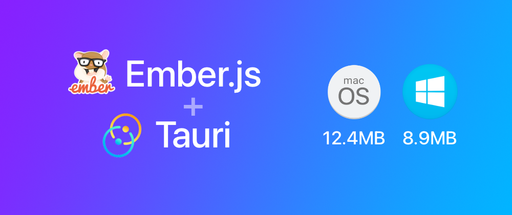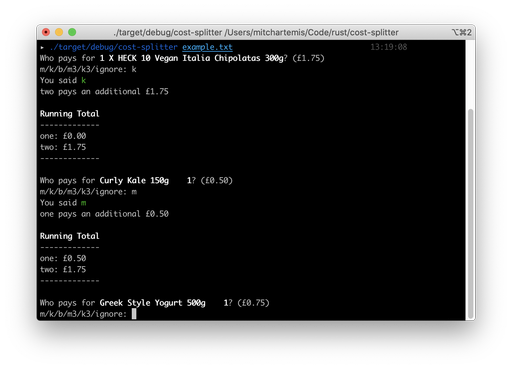This article will cover setting up a new Rails (4.2) application with Devise and allow users to add their mobile phone number to their account.
We'll use the phonelib gem to validate numbers and then send a 6 digit code via Twilio to the user's mobile to verify that it's theirs.
I'll be starting afresh with a new Rails application.
rails new verify
Dependancies
Add the following dependancies to your Gemfile
gem "devise", '~>3.4.1'
gem 'twilio-ruby', '~> 4.0.0'
gem 'phonelib'
gem 'dotenv-rails', :groups => [:development, :test] # optional
Run bundle to install the new gems.
Devise is the authentication system we'll be using.
Twilio-ruby will be used to send text messages. Make sure you sign up at Twilio and make a note of your test credentials.
Note that when you use test credentials you will not receive a text. You'll only receive an API response from Twilio.
Phonelib is a gem which validates phone numbers based on Google libphonenumber.
Dotenv let's you set environment variables in development. I use this to set Twilio test credentials but you can set them your own preferred way if you wish.
Setting up Devise
Run devise:install to set it up.
rails generate devise:install
Make sure you have a home route in config/routes.rb as described in the post-installation command notes.
root to: "home#index"
Add flash messages to your app/views/application.html.erb.
Source StackOverflow.
<%# Rails flash messages styled for Bootstrap 3.0 %>
<% flash.each do |name, msg| %>
<% if msg.is_a?(String) %>
<div class="alert alert-<%= name.to_s == 'notice' ? 'success' : 'danger' %>">
<button type="button" class="close" data-dismiss="alert" aria-hidden="true">×</button>
<%= content_tag :div, msg, :id => "flash_#{name}" %>
</div>
<% end %>
<% end %>
Generate your Devise model. I prefer to call mine User.
rails generate devise User
Before you run the migration command add these three columns to db/migrate/20150509173432_devise_create_users.rb
t.string :mobile_number
t.string :verification_code
t.boolean :is_verified
At this point you can run rake db:migrate.
mobile_number will hold each user's mobile number. verification_code will hold the generated code that you will send to their phone. is_verified is a boolean which will become true after a successful verification.
At this point you need to make a user. You can either run the server and go to http://localhost:3000/users/sign_up or do it with rails console and this code:
User.create!({email: "example@email.com", password: "test12345"})
Log in at http://localhost:3000/users/sign_in with your credentials.
Note that I haven't made a home controller or a home view. You will see an error when after logging in if you haven't either. It's not important for this article so long as you have successfully logged in.
Adding a mobile number
We need to add a new form to the user's edit profile page which allows a user to add their mobile number. To do this we need to publish the devise views so we can override them.
rails g devise:views
Add a new field to the form in app/views/devise/registrations/edit.html.erb.
<div class="field">
<%= f.label :mobile_number %><br />
<%= f.text_field :mobile_number %>
</div>
```
We will validate mobile numbers before we try to send texts to them. Earlier we installed the gem phonelib which we'll set up now.
In ```app/models/user.rb``` add the following validation.
~~~ruby
validates_uniqueness_of :mobile_number
validates :mobile_number, phone: { possible: false, allow_blank: true, types: [:mobile] }
validates_uniqueness_of will make sure no two users have the same mobile number.
In the validates method we set up phonelib with possible: false which, if set to true, enables a faster validation which is less strict. allow_blank means a user can enter no number at all. and types sets the types of numbers that are valid. Since we're sending texts I have set it to mobile. There are lots of types including voip and personal_number. You can see a full list in the gem's read me.
If you need to restrict the country you can do so by creating config/initializers/phonelib.rb and adding this code
Phonelib.default_country = "GB"
Since I am from the UK I will be using GB (Great Britain).
Make sure you restart your rails server after adding this setting.
At this point we need to add mobile_number to Devise's list of acceptable parameters. The easiest way to do this is to override them in the registration controller. Run the following command to generate all Devise controllers so that we can override them.
rails g devise:controllers acme
acme is the module and directory to place the new controllers. Call it what you prefer.
You can remove all of the newly generated controllers except app/controllers/acme/registrations_controller.rb.
Amend your devise route in config/routes.rb like so:
devise_for :users, :controllers => { :registrations => "acme/registrations"}
Now in app/controllers/acme/registrations_controller.rb add the following code.
class Acme::RegistrationsController < Devise::RegistrationsController
before_filter :configure_account_update_params, only: [:update]
def configure_account_update_params
devise_parameter_sanitizer.for(:account_update) << :mobile_number
end
end
Note that this code should already exists and is commented out. All we've done is change :attribute to :mobile_number.
At this point a user can add a phone number and we can verify it's a valid number. To go one step further we need to send the user a validation code for them to enter and verify that they are in possession of the phone.
Sending a verification code to their mobile
First let's make a helper method in the User model which will tell us if the account needs to be verified
# app/models/user.rb
# ...
def needs_mobile_number_verifying?
if is_verified
return false
end
if mobile_number.empty?
return false
end
return true
end
# ...
If the user is already verified it will return false and if there is no mobile number to verify it will also return false. We'll be using this method shortly.
Create a new controller for handling mobile number verifications. I called mine VerificationsController
rails g controller verifications
Add a route in your routes for the create method.
# config/routes.rb
post 'verifications' => 'verifications#create'
If you're using dotenv then now is the time to create a .env file in the root of your project and add your test credentials.
TWILIO_SID=""
TWILIO_TOKEN=""
TWILIO_PHONE_NUMBER="+15005550006"
Bear in mind that TWILIO_PHONE_NUMBER is currently set to the test number which is for sending valid text messages. Once you go live you will need to change it your own Twilio number. You will need to get your own SID and token from your Twilio account.
Restart your rails server after updating your environment variables.
In the new controller add the following code
# ...
def create
current_user.verification_code = 1_000_000 + rand(10_000_000 - 1_000_000)
current_user.save
to = current_user.mobile_number
if to[0] = "0"
to.sub!("0", '+44')
end
@twilio_client = Twilio::REST::Client.new ENV['TWILIO_SID'], ENV['TWILIO_TOKEN']
@twilio_client.account.sms.messages.create(
:from => ENV['TWILIO_PHONE_NUMBER'],
:to => to,
:body => "Your verification code is #{current_user.verification_code}."
)
redirect_to edit_user_registration, :flash => { :success => "A verification code has been sent to your mobile. Please fill it in below." }
return
end
# ...
-
On line 3 we create a random six digit verification code and assign it to the user.
-
Lines 6-9 checks if the number starts with 0 and if it does then convert it to +44 (which is the UK dialing code). Alternatively you may wish to save this to the database instead of doing it for every text.
-
On line 11 we create an instance of the Twilio class with our credentials.
-
Lines 12-16 handles sending the message to Twilio.
-
On line 17 we redirect back to the edit profile page.
We're going to add a "Verify mobile number" button to the edit page but there's no point in showing it if the user already has no mobile number or is already verified. This is where the needs_mobile_number_verifying? method from earlier comes in to play. We'll add a helper method to store the logic for showing the form.
rails g helper acme/registrations
# app/helpers/acme/registrations_helper.rb
module Registrations::RegistrationsHelper
def mobile_verification_button
return '' unless current_user.needs_mobile_number_verifying?
html = <<-HTML
<h3>Verify Mobile Number</h3>
#{form_tag(verifications_path, method: "post")}
#{button_tag('Send verification code', type: "submit")}
</form>
HTML
html.html_safe
end
end
On line 4 we return an empty string unless the user needs to be verified. On lines 5-11 we have a heredoc which contains the new form. Note that we could use plain HTML here but the form_tag allows us to use a path and it also adds the CSRF token for us. Lastly, we return ~~~html.html_safe``` which will be the output when we use it in our view.
Now in app/views/devise/registrations/edit.html.erb add the following code after the main form.
# ...
<%= mobile_verification_button %>
<h3>Cancel my account</h3>
# ...
Now this form will only show when is_verified is false and mobile_number is not empty.
At this point you should enter a mobile number and click the "Send verification code" button.
With test credentials you won't receive a text but if you spin up rails console and type User.first you should see a 6 digit number in verification_code field. This code will change each time you click the button.
Entering the code for verification
Add a new route and controller method to handle verification
# config/routes.rb
put 'verifications' => 'verifications#verify'
# app/controllers/verifications_controller.rb
def verify
if current_user.verification_code == params[:verification_code]
current_user.is_verified = true
current_user.verification_code = ''
current_user.save
redirect_to edit_user_registration_path, :flash => { :success => "Thank you for verifying your mobile number." }
return
else
redirect_to edit_user_registration_path, :flash => { :errors => "Invalid verification code." }
return
end
end
Let's make another helper method which will work the same way as the previous one.
This form will display when the verification_code field isn't empty so the user can enter their code.
# app/helpers/acme/registrations_helper.rb
def verify_mobile_number_form
return '' if current_user.verification_code.empty?
p current_user.verification_code.empty?
html = <<-HTML
<h3>Enter Verification Code</h3>
#{form_tag(verifications_path, method: "patch")}
#{text_field_tag('verification_code')}
#{button_tag('Submit', type: "submit")}
</form>
HTML
html.html_safe
end
Finally, add the helper to app/views/devise/registrations/edit.html.erb.
<%= verify_mobile_number_form %>
You can check it's working by generating the verification code and using rails console User.first to retrieve and enter the correct code.
Once you're happy that it works we should let the user know if their mobile is verified in their profile
<div class="field">
<%= f.label :mobile_number %><br />
<%= f.text_field :mobile_number %>
<% if resource.is_verified %>
You're mobile number is verified.
<% end%>
</div>
It's also a good idea to stop the code from showing in the log files.
# app/models/user.rb
filter_parameter_logging :verification_code
Final notes
You have a basis for the system here but it can be improved.
If a user enters a new mobile number is_verified should be changed to false.
If rand isn't secure enough for your verification code generator then take a look at The Ruby One Time Password Library.
The current set up is only ideal for users that have one mobile number. What happens if they want to enter more than one?
Lastly, as with emails, sending text messages can be slow. Not waiting-for-a-video-to-load-on-dial-up slow but enough for me to recommend setting up ActiveJob. I've been having some good success with Resque for this task.
Here's a quick snippet of the code I've used on a recent project.
# controller
SendVerificationCodeJob.perform_later(user)
# app/jobs/send_verification_code_job.rb
class SendVerificationCodeJob < ActiveJob::Base
queue_as :default
def perform(user)
# generate verification code
user.verification_code = 100_000 + rand(1_000_000 - 100_000)
user.save
to = user.mobile_number
if to[0] = "0"
to.sub!("0", '+44')
end
# twilio send
@twilio_client = Twilio::REST::Client.new ENV['TWILIO_SID'], ENV['TWILIO_TOKEN']
@twilio_client.account.sms.messages.create(
:from => ENV['TWILIO_PHONE_NUMBER'],
:to => to,
:body => "Your verification code is #{user.verification_code}."
)
end
end






